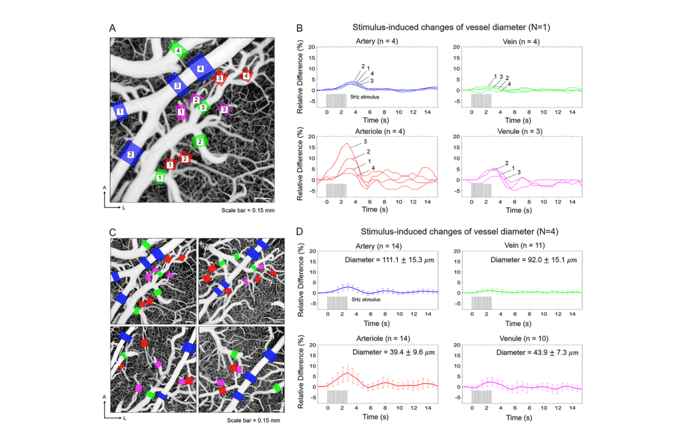The research team of Prof. Wang-Yuhl Oh in KI for Health Science and Technology (KIHST) investigated the sensory-evoked hemodynamic changes in the rat barrel cortex using optical coherence tomography (OCT) to demonstrate the potential of high-speed OCT for the investigation of neurovascular coupling in the rodent brain. Sensory-evoked changes in both vessel diameter and capillary hemodynamics were monitored over a wide field of view using OCT angiography (OCTA), as shown in Figure 1. The results showed prominent dilation of downstream arterioles with modest dilation of upstream arteries, which are several hundreds of micrometers away from the arterioles. On the other hand, veins show relatively negligible dilation.

Temporal changes of the OCTA signal in the capillary bed were also investigated using the same data. An increase in the signal in capillaries can be interpreted as an overall increase in capillary blood flow.

In summary, both spatial and temporal changes in diameters of various vessel compartments were simultaneously monitored using OCTA. The results of this study suggest that OCT can be highly useful in the investigation of neurovascular coupling in the rodent brain.
This work was recently accepted for publication in Journal of Cerebral Blood Flow and Metabolism (JCBFM).
Prof. Wang-Yuhl Oh (Department of Mechanical Engineering)
Paul Shin (Department of Mechanical Engineering)
Homepage: http://bpil.kaist.ac.kr
E-mail: woh1@kaist.ac.kr






